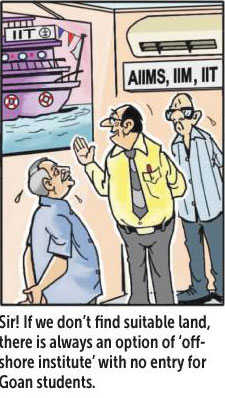
Ernesto Furtado
Perched on top of a landscaped hillock in the heart of a small village of Curca surrounded by valleys and hills overlooking the salt pans and fields of the villages of Batim, Siridao and Goa Velha, just off the National Highway 66, lies the beautiful Church of Curca dedicated to Our Lady of The Rosary also known as Igreja de Nossa Senhora do Rosario.
Curca is a historically important village as it was the home to Jewish settlements as well as to the Dominican Missionaries prior to the Portuguese in Goa. Its inhabitants also included the Portuguese Fidalgos (Nobility). There were also the Gaunkars from the Communidade of the village.
The foundation stone for the construction of the Church was laid on February 24, 1647, by Arch Bishop D Fr Francisco dos Martires during the governance of Viceroy D Filipe Mascarenhas. The Church was built by Dom Manoel Lobo Da Silveira, a Portuguese nobility and was inaugurated on June 29, 1650, with a solemn Eucharistic celebration which coincided with the feast day of St Peter and St Paul, the great pioneers of the Catholic faith. The first parish priest was Fr Frei Paulo de Santa Catharina who remained in this Church till his death.
The Church, though small in size, has four altars. The main altar being dedicated to Our Lady of The Rosary also known as Nossa Senhora do Rosário in Portuguese. To the left is the altar of Our Lady of Remedious, to the right is the altar dedicated to St John the Baptist also known as Sao Joao Batista. As one enters the Church, to the left is the altar of the Sacred heart of Jesus (Coracao de Jesus).
The Feast of Our Lady of the Rosary is also known as ‘Rozachem Fest’ as devotees offer garlands of marigold which are called Rozam in Konkani. The feast is celebrated on the first Sunday of October. The statue of Our Lady with Infant Jesus is kept on the left side of the main entrance in a glass case and is taken out during the novenas in a Charol for veneration. On the feast day, the residents of the village, majority of whom are Hindus, visit the Church to pay obeisance to Our Lady with garlands, candles and oil. The statue remains till the last Sunday of October when after the Sunday Mass, the statue of Our Lady with Infant Jesus is ceremoniously taken in a procession and placed back in the glass case.
Last Saturday, June 29, the parishioners celebrated the Feast of St Peter and St Paul, the great apostles and pioneers. To mark the first Mass that was celebrated in 1650 and now as the Church of Curca celebrated its 374 years.
To commemorate this great day, the parishioners were honoured to have His Excellency Most Rev Simiao Purificacao Fernandes, the newly ordained Auxiliary Bishop of Goa and Daman to celebrate the solemn Mass along with the congregation. In his homily, the Bishop expressed his views on how a church can be kept alive with the active participation of the parishioners with guidance and enlightenment of the parish priest. He lauded the work of the parish priest, Fr Benjamin Victoria, who worked tirelessly along with his parishioners to beautify and maintain the age-old church in good standing.
The Church echoed with the beautiful melodious voices and backup of instruments of the choir who gave their best under the guidance and direction of Milion Fernandes. To inaugurate and celebrate the Jubilee year of Our Lady of the Rosary Church, the Bishop along with the representatives of the Parish Council cut a cake which was followed with high tea. The celebration was well attended by the parishioners and people of other faiths.
